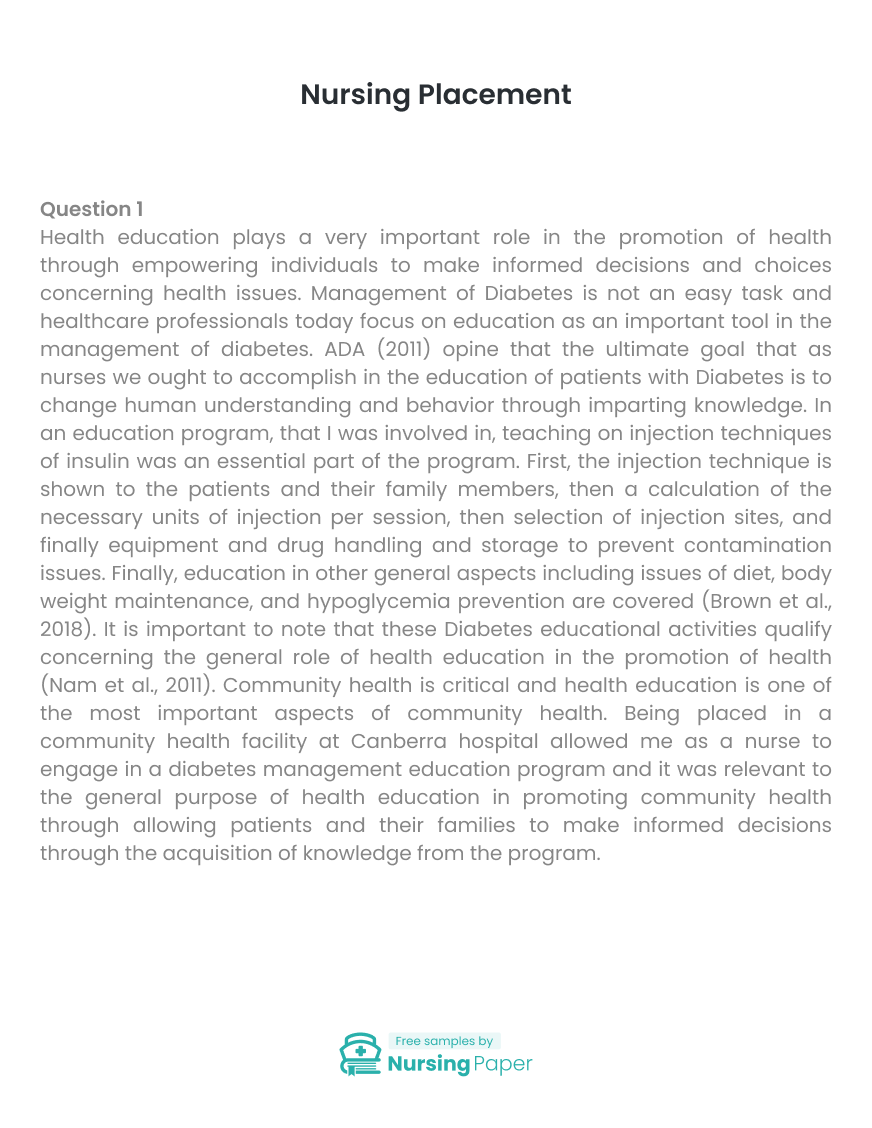1. American Diabetes Association (ADA). (2011). Standards of medical care in diabetes-2011. Diabetes Care, 34. DOI: http://care.diabetesjournals.org/content/34/Supplement_1/S11
2. Brown, A. S., Garcia, A., Zuninga, J. & Lewis, A. (2018). Effectiveness of workplace diabetes prevention programs: A systematic review of the evidence. Patient Education and Counseling, 101(6), 1036- 1050. DOI: https://doi.org/10.1016/j.pec.2018.01.001
3. Nam, S., Chesla, C., Stotts, N. A., Kroon, L. & Janson, S. L. (2011). Barriers to diabetes management: patient and provider factors. Diabetes Res Clin Pract, 93(1):1–9. Doi: 10.1016/j.diabres.2011.02.002
4. Keleher, H. & R. Parker. (2013). Health Promotion by Primary Care Nurses in Australian General Practice. Collegian 20: 215–221. DOI: 10.1016/j.colegn.2012.09.001
5. McQueen, D.V. & Salazar, L. (2011). Health Promotion, the Ottawa Charter and ‘Developing Personal Skills’: A Compact History of 25 Years. Health Promotion International, 26. DOI:https://academic.oup.com/heapro/article/26/suppl_2/ii194/57970
6. Roden, J. & Jarvis, L. (2014). Evaluation of the health promotion activities of paediatric nurses: Is the Ottawa Charter for Health Promotion a useful framework? Contemporary Nurse, 41(2), 271-284. DOI:https://doi.org/10.5172/conu.2012.41.2.271
7. Collette Loftin, Vicki Hartin, Marietta Branson, & Helen Reyes. (2013). Measures of Cultural Competence in Nurses: An Integrative Review. The Scientific World Journal, 2013 (89101) 10 pages, DOI:https://doi.org/10.1155/2013/289101.
8. Denise J. Drevdahl. (2018). Culture Shifts. Nursing Research, 67(2), 146–160. DOI:https://digitalcommons.tacoma.uw.edu/nursing_pub/146/
9. Linda Harkess & Mahmoud Kaddoura. (2015). Culture and Cultural Competence in Nursing Education and Practice: The State of the Art. Nursing Forum. DOI: https://doi.org/10.1111/nuf.12140 https://nursing.duke.edu/sites/default/files/culture_publication.pdf
10. Brynildsen, G., Bjork, T. I., Berntsen, K. & Hestetun, M. (2014). Improving the quality of nursing students’ clinical placements in nursing homes: An evaluation study. Nurse Education in Practice, 14(6), 722-728. DOI: https://doi.org/10.1016/j.nepr.2014.09.004
11. McKenna, L., McCall, L. & Wray, N. (2010). Clinical placements and nursing students’ career planning: a qualitative exploration. Int. J. Nurs. Pract. 16(2), 176-182. DOI: 10.1111/j.1440- 172X.2010.01827.x DOI:https://www.researchgate.net/publication/44615724_Clinical_placements_and_nursing_students %27_career_planning_A_qualitative_exploration
12 Warne, T., Johansson, U., Papastavrou, E., Tichelaar, E., Tomietto, M., Van den Bossche, K., Moreno, M.F.V. & Saarikoski, M. (2010). An exploration of the clinical learning experience of nursing students in nine European countries. Nurse Educ. Today, 30(8), 809-815. DOI:http://dx.doi.org/10.1016/j.nedt.2010.03.003

The download will start shortly.



 Subject:
Subject:
 Number of pages: 3
Number of pages: 3